You probably know her from her wonderfully detailed puzzle cookies, or her Blythe girls with their mesmerizing eyes . . . or her meticulously painted matryoshka dolls . . . or her interesting use of perspective . . . or her striking snowflakes that are gracing the site’s banner and backdrop as we speak!
Yes, you guessed right! Our Close-up this month is with none other than the multi-talented Rebecca Weld of The Cookie Architect, our first featured winner of Practice Bakes Perfect Challenge #13, which challenged members to design artwork for this site.
A couple of months ago, we had the opportunity to briefly catch up with Rebecca and her cookie happenings in a live Cookie Connection chat. Today, I’ll pick up where we left off, digging deeper into her remarkable creative process and her observations about how the cookie world has changed since her landmark National Public Radio (NPR) interview, now nearly two years ago.
![]()
JMU: Hi, Rebecca! I hope you had a wonderful holiday and New Year! First, before we do anything, a big thank you for working through these questions during the busiest cookie time of the year! THANK YOU!
Since 2016 is just kicking off, let’s start with a little retrospective on 2015 and some New Year’s resolutions, shall we? ![]() Looking back at your cookie life in 2015, what was your most memorable experience? And, if you could turn back time, what, if anything, would you have done differently to make your cookie experiences even better?
Looking back at your cookie life in 2015, what was your most memorable experience? And, if you could turn back time, what, if anything, would you have done differently to make your cookie experiences even better?
![]()
RW: My most memorable cookie experience of 2015 was definitely CookieCon! Getting to teach the pre-event classes was exciting and new, and seeing old friends and meeting new ones was so great. I liked meeting some ladies I really admire - Mallory of ButterWinks and Bridget of Bake at 350 were as lovely in person as you can imagine! And I was super honored to be one of the cookiers who helped illustrate a cookie storybook just for CookieCon attendees. The whole event was a lot of fun.
And if I could turn back time and change anything, I would organize the timing of some projects differently. I had a lot of collaboration projects that got jammed together on the schedule and then I'd get burned out! And a tired cookie momma is no fun at all!
![]()
JMU: And what would be your top three cookie-related resolutions for 2016? So as not to put you on the spot, I’ll go first! ![]() Mine are: (1) organize my basement work area (it’s so messy, it’s often faster for me to buy things I know I already have than to find them.
Mine are: (1) organize my basement work area (it’s so messy, it’s often faster for me to buy things I know I already have than to find them. ![]() ), (2) spend more time creating and less time on admin duties; and, last but not least, (3) get help so I can accomplish (2)!
), (2) spend more time creating and less time on admin duties; and, last but not least, (3) get help so I can accomplish (2)!
![]()
RW: Number one, focus some more attention on my blog. I have great ideas for blog posts when I do cookies, and I want to be posting there every other week at least, or weekly, and not once a month. Number two, don't take on any new cookie collaborations. I love them and all, but my work schedule is too demanding for cookies to be on a schedule. Number three, get out and teach some classes!
![]()
JMU: Best of luck! I know I'll need some myself to keep my resolutions!
Since you've mentioned your "work schedule" . . . let’s chat about your work and non-cookie life a bit, and how they mesh with your cookie existence.
I know you’re a full-time architect and mom of two young boys. I also think you got your start in the cookie world by making large-scale gingerbread buildings like the one below. Can you tell our readers a bit more about how and when you first got drawn into cookie decorating? Why did you start so BIG with complex gingerbread projects, and why have you migrated to cookies that are more “normal” in scale?
![]()
RW: The gingerbread projects started out as an early PR campaign of sorts for my architectural business. I moved to my mom's town with my husband and one son, and opened up a firm with a small nest egg and nothing else. So I needed to drum up clients and quick! There is a local non-profit that supports the arts, and it had an annual gingerbread contest just a few months after I came to town. Since I was basically unemployed, I put a week and my considerable model building skills from university to use and made an Adirondack gingerbread chalet to try to pique some interest. And it worked! In the next couple of years, I replicated large local architectural monuments in gingerbread to show my range of interests, including historic architecture.
Spending weeks on gingerbread architecture was great when I was unemployed with one small kid. But when my business started taking off and I was pregnant with baby number two, it soon became clear that I couldn't set aside weeks to work on a huge gingerbread project. So when I was stuck on the couch nursing during the next “gingerbread season”, I somehow stumbled onto cookie decorating and checked out all of your books from the library, and did things like read all of LilaLoa's blog in a few days. I was hooked, and big time.
![]()
JMU: Wow, I had no idea my books factored into your turn toward cookies. Cool!
So, how do you keep your cookie and real lives balanced? It’s got to be a huge juggling act with small kids and a busy non-cookie career! To give us all a little context, roughly what percent of your time each week is spent cookie decorating? And what percent of that time is spent fulfilling orders, designing for the pure art of it, teaching, or doing other cookie activities?
![]()
RW: I am a self-employed architect with my own firm and an employee and office. I spend 40 to 60 hours a week designing additions, homes, and buildings for clients. Even I would never guess that from my cookie work and online presence. I've poured cookies (looking at, commenting on, designing, and making them) into lots of crevices that used to hold other things: chores, sleep, exercise. All have suffered to varying degrees since I became interested (ahem, **obsessed**) with cookies. In fact, the last year and the coming year are a project of walking myself back to something resembling a cookie/real life balance.
Depending on the time of year, I spend as much as 16 to 20 hours a week on cookies, less during weeks/months where I have more work demands. It is pretty project-oriented. So there is a steady daily process of designing cookies, with making them in fits and starts, usually centered around a weekend when I can stay up later and take pictures in the afternoon. As far as percent of time in types of work, I made one big puzzle last year, a book illustration, a calendar page, several sets for cookie classes, and all the rest for my own and others' amusement, for the most part. The puzzle and classes generate some amount of revenue, mostly just enough that I can keep myself in cutters and things, haha! The rest was all done on donated time, and the cookies were given away.
![]()
JMU: Phew, you do work a lot! Now, let’s talk design process – one of your (many) clear strengths! I’d say the puzzle cookie or cookie array is a signature creation for you. (By cookie array, I mean one where a bigger cookie image or pattern spans several artfully cut cookie shapes.) Why did you gravitate toward this type of cookie design? Had you seen it somewhere before? Did it speak to the architect in you in some way?
![]()
RW: Looking back, I see that the first array I made was actually a quilt pattern (above). I was making a cookie set to honor my mom, and she is a fabric artist in some of her spare time. She's also a mathematician, so all my life we've had these intricately patterned quilts on the walls of our houses. And I used to do some quilting and fabric art at one point. So that felt pretty natural to do.
The next time, I was doing a cookie for the back page of a magazine. I wanted a way to tie related images together, and so I settled on a window-framed pattern to make the different pieces, but also carried the images across the lines in places.
I had seen a few cookie sets that were arrays that I liked, but in my case, I was mostly doing them because, in the design of my sets, I had an image in mind that was bigger than one cookie. I don't like working on big cookies as much, so I tend to break down bigger images. And I like the interplay of the background puzzle pattern and the foreground image.
![]()
JMU: So do I! Can you tell us more about how you go about designing your puzzles? For instance, what are your typical sources of inspiration? Do you determine the shapes of the puzzle pieces first or the overarching pattern/image that will go on top? Are the pieces designed to integrate or complement the overarching image in any way?
![]()
RW: Each set I design starts from a different place. Sometimes there are outside criteria I am thinking about; other times I get inspired by something I've seen or that comes to me. I always have a vision that I am trying to bring to fruition. Probably the most typical sources of inspiration for the puzzle shapes have been architectural, i.e., window muntin patterns (the glass pane divisions) or tile patterns. Each project is a little different about which comes first - the cookie puzzle or the image on top. Actually, there is usually some internal back and forth as I am sketching. (“If I break up the cookies this way, then the layout will look something like this, but if I do it that way, I'll have to mirror that element.” And so on and so forth.)
In the case of my "Adirondack Dreaming" set, below, I had many, many sketches of possible cookie puzzle breakdowns, and the implications they would have for the architecture, which I had ideas about, but nothing concrete. I developed both at the same time. In every case, the puzzle is meant to complement the design of the image. For example, in that Adirondack set, the motif of the cookie puzzle pieces is repeated in the muntin patterns of the windows in the building depicted in the image.
![]()
JMU: Yes, I love those repeating motifs - they make everything hang together so cohesively.
So . . . it’s fitting that, as our first Practice Bakes Perfect challenge host, you should be the first cookier featured from Challenge #13, where members were tasked with designing monthly banners and backdrops for this site. (Your snowflake entry, below, sparkles!) Let’s talk about the design process some more, but now in the context of that entry. What was the most challenging part of that design task, and how did you tackle it?
![]()
RW: The most challenging part of that design task was definitely keeping the interest where it would show on the site edges, but in a variable way as screen sizes and shapes shift. I knew that a relatively small scale with multiple elements would add interest and give me some flexibility with the differing requirements for the banner and backdrop. Initially, I didn't make as many cookies as are shown above, but I decided I needed a profusion of cookies, especially when the first round of designs failed to impress me.
![]()
JMU: Well, the set surely impresses now! A little more about the techniques used in that entry . . . Those snowflakes are so intricately piped – they’re magical. How did you get all of the tiny elements on each snowflake to align so perfectly? Did you draw the patterns first and then transfer them to the cookies? Or did they evolve more organically? I also have terrific trouble with cratering in small angular spaces like those on your snowflakes. Did you have any such trouble (if so, it’s not evident) and how did you handle it?
![]()
RW: I actually had an even more organic and a kind of seventies wobbly diamond aesthetic in mind. But after two or three of the cookies, it became clear to me that they were going to look like they looked, and I better just make enough of them that the variety worked together.
I did not draw the patterns first; I started in the middle and worked my way out. I did use a brown food writer on the gingerbread to mark the center lines of the snowflake arms. I had frankencookied two snowflake cutters together (overlapped them and used both patterns in one cookie), so I had twelve points instead of the usual six on the bigger cookies. It seemed too chaotic to try to pipe them without at least the guidance of the center lines.
I didn't have much cratering except once when I tried to add wet-on-wet dots to the diamonds. I piped the diamonds in 20-second icing and used a scribe tool to help with the points. I also used a heat fan (like a mini space heater) on my countertop. I would pipe around a few rows, and then put the cookies in front of the heat fan - maybe two or three times for each cookie as I worked my way out to the edge. In the end, I also painted all of the cookie edges with silver luster dust. I used TruColor Silver Shine Food Paint (from some winnings at CookieCon) for the first time, and I was really impressed. I also rubbed it dry around the edges to kind of fade it in from the fully painted edge to a faintly sparkly center - mostly because I like sparkly cookies.
![]()
JMU: Thanks for those details! Clearly, the heat fan prevented those pernicious craters! Now for the next topic . . .
Oftentimes as cookiers, we’re presented with real-life design challenges in the form of the curveball customer request! ![]() What general tips can you give readers for coming up with a cohesive and artful design or set when given only sketchy, or disparate, guidance from a customer?
What general tips can you give readers for coming up with a cohesive and artful design or set when given only sketchy, or disparate, guidance from a customer?
![]()
RW: Well, I recommend having one "seed" image or idea through which you filter everything else, so that the main idea helps decide the smaller elements. If you are going bold in the main plaque cookie, maybe you keep everything bold. Bold colors, bold border, bold font. On the other hand, maybe you do it all with one technique, or one relatively simple palette. If simplifying isn't going to work, as when you have the set for the cat lady turning 60 who loves to bowl and always wears purple with red heels, I find that if you take the distinct elements, and cross-pollinate the details across the set, that can help. So maybe there is a recurring border motif, or bit of glitter or sanding sugar that is different things on different cookies. Or maybe the lady is wearing red heels, and the cat is curled up in a red shoe, and the bowling ball is red. There are several methods that can work, but the key is to find something that can be coherent for you, so when you are deciding some element, you can say, ”I said this set is going to be bold, so I pick this striking silhouette instead of that whispy portrait for this cookie image.”
![]()
JMU: You taught a design course at CookieCon 2015, and I heard through the grapevine that it was met with rave reviews. Congrats! Do you have any other design pointers from that class that you think are important to share with members?
![]()
RW: Something I learned in architecture school that I passed along to the classes is to get a design friend or design friends (or a cookie group) willing to offer opinions. Share a Pinterest board or send them screen shots. Half of the time, I find that simply telling someone how I am stuck will have the solution coming out of my mouth before it is even a conscious thought. And the other half of the time, either they have the answer, or their answer will be the perfect catalyst to my own truth. By which I mean, they will say white, and I will know that black would be perfect, haha! Obviously, the best design friends won't take that personally. ![]()
![]()
JMU: Back to puzzles! You not only make edible puzzles out of cookies, but you also make inedible ones with cookies as the theme! (Everyone, take a look at Rebecca’s Springbok puzzles here and here, and also pictured below!) It must be incredibly gratifying to see your work published in this format! Can you tell us how this opportunity came about, and how designing a cookie composition for a real jigsaw puzzle is any different, if at all, than your usual, day-to-day cookie designing?
![]()
RW: It came about because a fan alerted me to an annual contest that Springbok has where you can submit an image to be made into a puzzle. They liked my image, but thought it was too “flatly arranged” to make a good puzzle. They were looking for a new take on cookie puzzles, as food puzzles are popular. So they asked me to start making cookie sets for them. As I have been doing Springbok puzzles since I was a kid, I couldn't have been more excited and honored!
Puzzle designing is definitely different than regular designing. For starters, the Springbok team usually has some specific things in mind: season, theme, maybe even an example photo or two. There is some initial back and forth to flesh out these details, and then I start sketching. One feature they are always looking for is depth of design, meaning cookies at different levels, not all in one flat plane. So for the spring flower puzzle, I designed so that elements would be forward and back in the scene, and the flowers would pile up somewhat like a bouquet. The Christmas wreath puzzle is similar in this respect. There is a whole level of cookie pine boughs forming the wreath under all the other elements.
In addition, I try to fill the entire space of the puzzle image, and to have colors and images repeat across the puzzle to keep it challenging to put together. I also have to stay on point with the details, and up the level of complexity, because often the image is larger than life. I think the cookies in the spring puzzle were at least twice as big as the actual ones!
![]()
JMU: So fascinating! What were the most gratifying parts of this puzzle designing and publishing experience? the least gratifying?
![]()
RW: Definitely the most gratifying part is having my cookie designs out there in the real world. The fact that Springbok is branding them with my name is huge, because there were particular artists that I “followed” when I did Springbok puzzles, so to be one, and have other people make traditions with my puzzles is hugely exciting! The least gratifying part is that I don't get final say on background and layout. I don't really mind that they shift things around when they put it together and photograph it, but of course, I also have my own ideas about how I might tweak things. Really though, they are pretty great to work with!
![]()
JMU: As I alluded to earlier, you and cookie art were the subject of an NPR interview back in 2014. At that time, interest in cookie art was just beginning to explode, so much of that interview was spent exploring why that was the case. In the two years since then, what has been the single most positive change you’ve seen in the cookie world? And have you seen any changes that you’d rather hadn’t happened? If so, why?
![]()
RW: Well, I have definitely seen growth, and an increasing awareness among the public, with more books published and people on baking shows and that sort of thing. CookieCon this year was hopping! The most positive change beyond that? For me, it is that there are places beyond Facebook where you can show cookies and see cookies. I like Instagram, because it is much easier to keep up with cookiers there, without the algorithm nightmares of Facebook. And Cookie Connection is really an amazing resource for seeing cookies from all over the world. And the tutorials and challenges are a great source of information and inspiration for cookiers of all types.
The change I've seen that I'd rather hadn't happened is probably just an uptick in drama. I remember thinking a while ago that cake people had to deal with a lot more politics and infighting, but I've seen some of that in the cookie world now too. I don't make much of it though. When many people are socializing and creating together, there are bound to be disagreements and dramas from time to time.
![]()
JMU: Interesting observations! (Thanks too for the generous Cookie Connection shout-out! Much appreciated!)
Lastly, let’s imagine that NPR’s David Sommerstein wanted to interview you all over again at the start of 2016. What would you tell him now about where the cookie world is headed, and how you, The Cookie Architect, fit into cookie space?
![]()
RW: Cookies are on the rise, for sure. So much more edible beauty in the world, and I love it! I have always thought of myself in my corner of the cookie world doing things that inspire me, and that I think are fun, but that are definitely on the arty and involved side of things. Hopefully my work inspires others, but I certainly am not the source for how-tos or cookies to sell for the party, both of which are well covered by so many talented others. And I say this every year, but I'm getting better about it these days: the architect in The Cookie Architect is the most important thing that I do, and so my concentration this year will be on my firm. I hope to publish another puzzle or two, and teach some classes, but otherwise not overcommit myself and just make some things for fun, so I can be healthy and happy at year's end!
![]()
JMU: I hear you! When it comes to overcommitment, I could stand to take a page out your playbook! Best of luck in 2016 - I have no doubt that you will continue to be a great success in all you choose do! Thanks for your incredibly thoughtful answers to these questions. It's been a pleasure learning more about you!
All cookies and photos by Rebecca Weld.
Interested in learning more about Rebecca? Of course! Please check out her blog and visit with her on Instagram and Facebook!

Cookier Close-ups is the place on Cookie Connection where we celebrate the change-makers of the cookie decorating world. Whether forging new enterprises, inventing novel decorating techniques, or consistently charming us with their cookie decorating prowess, each of our featured thought leaders has redefined in his/her distinctive way how we interact, create, or otherwise do business here in cookie space!
If there are other cookiers you'd really like to get to know, please post requests in this forum. We'll do our best to round them up for an upcoming Cookier Close-up! Thanks!



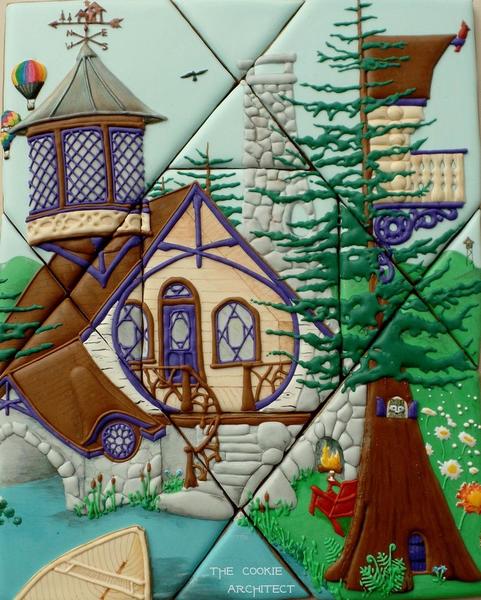


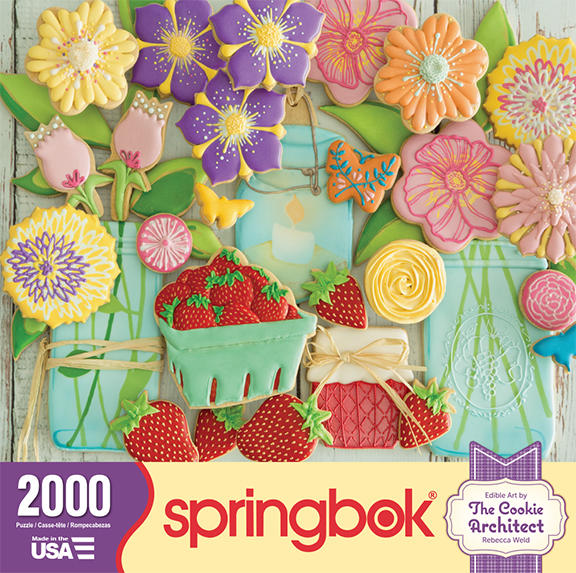



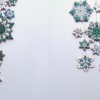
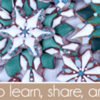
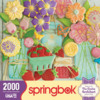


Comments (16)